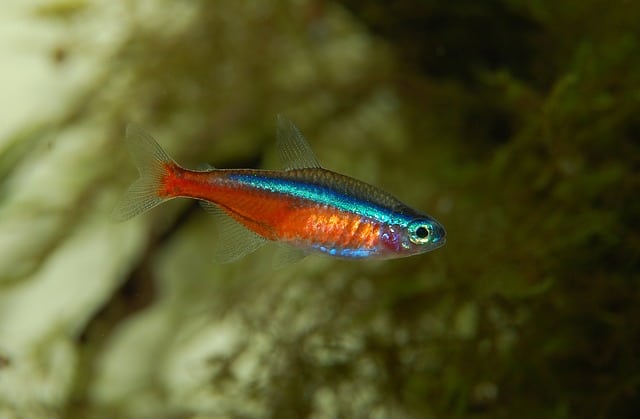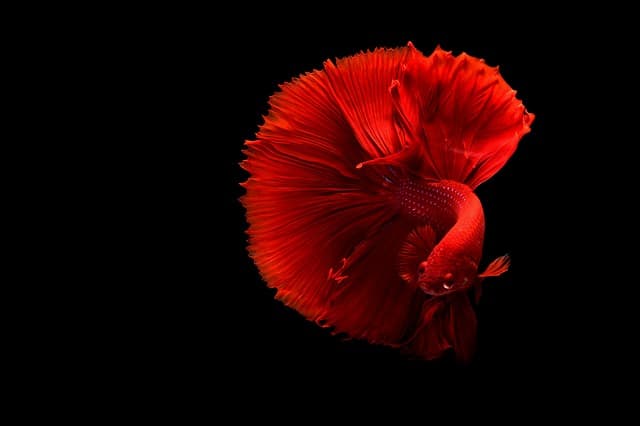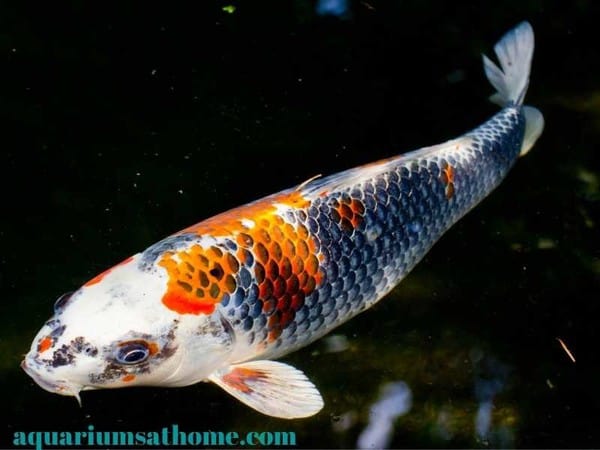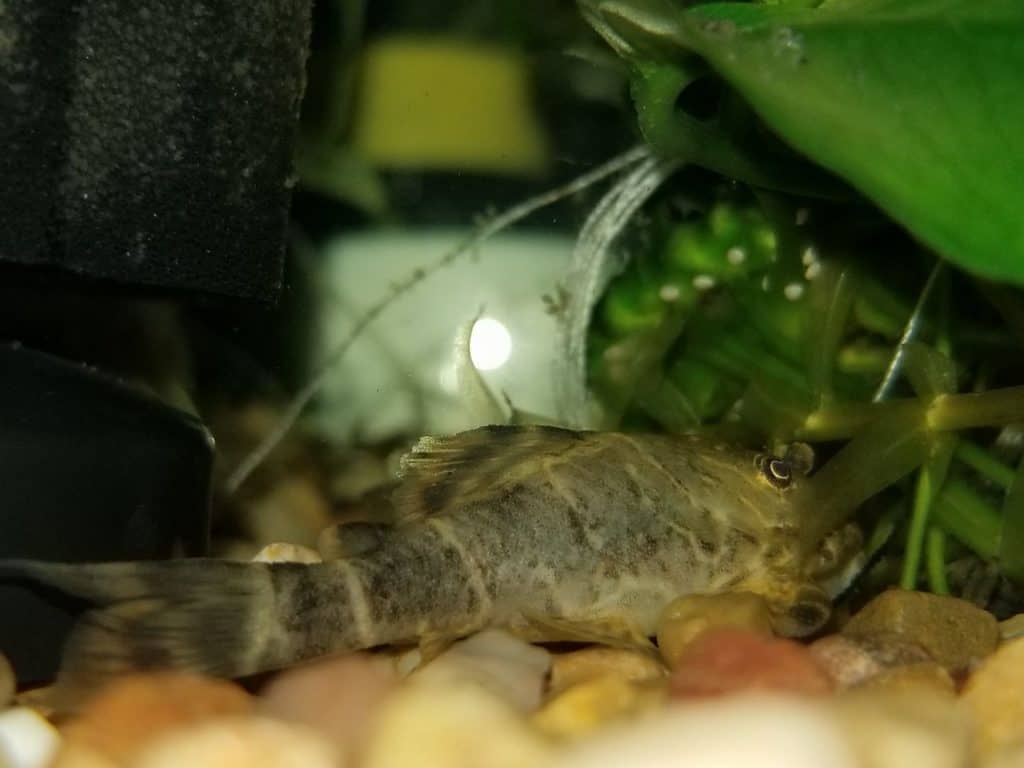Every aquarium owner dreams of a clean, maintenance free tank with happy and active inhabitants. Even though this is like building castles in the air, believe it or not, snails can get you closer to that dream.
Contrary to popular opinion, adding freshwater snails to your tank should not be a cause for alarm especially when you choose the snails yourself. Some snail species offer plenty of benefits, and they can save you from constantly scrapping off the algae growing on the surface of the aquarium.
Are Snails good for your Fish tank?
The biggest concern for most aquarists is how their fish will co-habit with snails. But some snail species are not only good but also pivotal to the survival of fish in the aquarium. The emphasis being on some types of species not all.
Most beneficial types of snails are bought from aquarium stores. There are other types that hitch rides on ornaments and plants you purchase. These are the harmful kind. If you don’t get rid of them quickly, they can destroy the balance in the aquarium and they multiply quickly.
Because you only want the good guys in your tank, you have to do some research. Even with snails you choose yourself, you need to be sure of what to expect. The size of your tank is one of the most essential factors to consider when choosing the ideal snail because of the population.
Best Aquarium Snails for a Successful Aquarium
There are up to 11 different species of snails that you can keep in an aquarium. That doesn’t mean that all of them are good candidates. Just like fish, you have to consider how the snail looks, how active and efficient it is, and the most important factor of how quickly it reproduces.
A handful of snails can lay thousands of eggs, and before you know it, you have tons of slithering pests on your glass and embedded in your tank. To avoid such a situation, here are some common freshwater snails that make great pets.
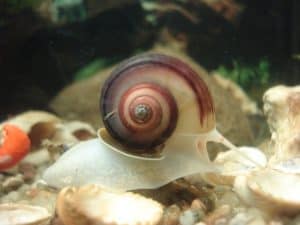
Mystery Freshwater Snails
Because of its vibrant colors, the mystery freshwater snail is the most sought after, and commonly stocked freshwater snail available at your local fish store.
It is an easy-going snail and can co-habit with fish, shrimps and even plants. Even though they grow to a staggering 2 inches long or more, they are peaceful move gracefully as they devour algae.
Don’t be fooled by their slow pace. They are conniving escape artists that will find the most difficult escape routes and use them to regain their freedom. Make sure the tank is properly sealed to avoid runaways.
Recommended parameters for Mystery Snails;
Temperature; 68 to 84oF
PH; 7.6 to 8.4
Water type; Hard
Ramshorn Freshwater Snails
Ramshorn snails are quite the pet. They have a beautiful shell that is a great addition to your tank, and they have an incredible appetite that keeps everything spik and span. They also tend to hitch rides on ornaments so don’t be surprised if you come across a few in your tank that you didn’t buy.
They mainly feed on hair algae and scavenge for food and detritus at the bottom of the tank. Their small stature makes them ideal for most medium tanks.
Recommended parameters;
Temperature; 60 to 80oF
PH; 7.0 and above
Water type; soft to hard
Nerite Freshwater Snails
If population is your greatest fear, you will love the nerite snails particularly the Zebra Nerite snail. It is a beautiful, hardy, and a very hungry snail that requires brackish water (hard water) for its eggs to hatch.
Even though it is sensitive to nitrate levels, its inability to reproduce in a tropical tank makes it the ultimate algae-eater without the risk of turning into a pest. It is a great tank-mate and gets along with plants, shrimp and fish.
Recommended Parameters;
Temperature; 65 to 850F
PH level; 6.5 to 8.5
Water type; medium hard
Assassin Freshwater Snails
The assassin snail is not a pet per se. It is more of pest control method. As the name suggests, this type of snail preys, kills and eats other snails.
Assassin snails are perfectly harmless to fish and shrimp. This makes them the ultimate biological weapon to wipe out pest snails out of your tank or control population.
Despite its dark reputation, the assassin snail is quite the looker. It has black and yellow stripes which are quite impressive even in a dark substrate. The fact that it rarely grows past 2 inches is a great plus because it can be housed in medium-sized tanks.
Recommended parameters;
Temperature; 68 to 740F
PH level; 6.5 to 7.5
Water Type; Soft to Hard
Other interesting but less common types of freshwater snails that are great for your aquarium include the Malaysian Trumpet snails and the Rabbit snails. These are colorful varieties that feed primarily on algae.
What Do Aquarium Snails Need to Survive?
Keeping your new tank-mates alive takes some work and dedication. You have to keep a rigorous maintenance routine and ensure you keep a close eye on the different parameters in your aquarium.
Before taking the snail home, make sure you understand its ideal environment. If you intend to keep the snail together with fish, choose one whose conditions and requirements match those of the fish. You don’t want to keep the snail alive but kill the fish.
To help you understand the best environment for your freshwater snails, here are some of the most common questions about snail survival.

What is the Ideal Water Quality for a Freshwater Snail?
The most crucial factor in the survival of your new tank members is the quality of water. Snails prefer hard water with lots of dissolved minerals which help to build their shells. The ideal temperature of the water varies depending on the type of snail. If you’re in a cool climate, you might want to invest in a good heater.
Always go for the lower concentration of dissolved minerals because it helps to control the reproduction of the snails.
What Do Freshwater Snails Eat?
Unlike most fish, snails are scavengers. They will eat algae, detritus, and decomposing food particles. Once in a while, you can supplement their diet with a bottom feeder tablet to be sure they are having enough to eat.
Be careful not to over feed the fish or the snails. As with every colony, the abundance of food can encourage population explosion. Only feed your fish what they can eat in a few minutes to control the number of snails in the tank.
What is the perfect temperature for a freshwater snail? – Snails are very picky when it comes to temperature. Most types flourish in temperatures between 72 to 82 Fahrenheit. Other than maintaining the right temperature, you have to consider other factors that can affect temperature like climate. Make sure you adjust the heaters accordingly to avoid a catastrophe inside the tank.
What Should be the Routine Maintenance Procedure?
Adding snails to your tank should not change your routine. If you have a schedule that works for you, you can continue using that. But, it is advisable to check the filters, heaters and other equipment in the tank on a weekly basis.
The quality of the water should be checked at least once a week, this includes monitoring the ammonia levels and pH of the water and adjust accordingly.
You should change 25% of the water in the tank every two to four weeks. If your tank is overpopulated or small, the changes can be more frequent.
How to clean a Tank When you Have Snails in It
Just because the snails are helping you with the clean-up doesn’t mean you should slack on cleaning the tank. Once in a while, the tank needs a good scrubbing. With snails, it won’t be as easy as moving them to another tank. So, you need to be a little creative.
Start by switching off all the equipment and taking them out of the tank. Be sure to check for stowaways in the filters and pumps. Siphon the water to mid-level of the tank then use your hand (clean of course) stir things around and get the debris to rise up out of the substrate. Move the substrate (with the snails hiding in it) to one side of the tank.
Siphon more water out of the tank from the bare side of the tank then spread the substrate again at the base of the tank. Clean the filter and the pumps. Check for escapees and put them back in the tank. Let the debris in the bucket water settle down before adding it back to the aquarium.
How Do I Tell if My Snails are Healthy?
The snails will only be beneficial if they are healthy. Luckily, invertebrates are very resilient towards diseases. So, most of the complications are usually because of issues with water quality or lack of enough nutrients. Happy, healthy snails are always moving around looking for their next meal.
They have an even coloring and a clean appearance. Any signs of fungus or spots in the mouth or body of the snails should have all your senses on high alert. If the snail is also lethargic and in its shell hiding most of the time, you should be concerned.
Remove the ailing snail from the tank and make the water changes more frequent to avoid losing even more algae-eaters.
When setting up the tank, you should remember to have a soft and blunt substrate to avoid injury to the snail’s delicate underbelly.
How to Manage Snail Populations in Your Tank
Most aquarium owners buy snails to keep as pets. But, because they are hermaphrodites and reproduce rapidly, they quickly take over the tank and become unsightly, and you don’t want them anymore!
If you’re unfortunate enough to find yourself in such a situation, here are a couple of tricks you can use to stamp your authority and get back control of your tank.
The lettuce method
If you prefer to take the more humane and diplomatic approach to snail control, the lettuce method is the best. The little slitherers don’t always have to die. You can donate them to a friend or the local pet store. If you decide to kill them, they die on a full stomach.
Simply place a lettuce leaf at the base of the tank and anchor it down. Switch off the lights and cover the aquarium. After a few hours, pull out the leaf with all the snails still attached to it.
Introduce predators
If you’ve had enough and would rather watch the snails run (or slither) for their lives, you can use a more brutal and equally effective method by introducing predators into the tank.
Clown Loach
The clown loach is one of the best-known snail connoisseurs. If you have a big tank that can support their enormous size, they make for the perfect pest control method.
Yoyo Loach
If the size of the clown loach is a concern, the Yoyo Loach is a worthy alternative. Even though they are only half the size of their cousins, what they lack in size they make up for in appetite. They thrive in schools of six and require a tank with a minimum capacity of 55 gallons.
Gourami’s
The Gourami’s appetite for resident snails has not been verified. There are plenty of reports that indicate these beauties are the perfect counter attack for a snail infestation but, there is no indicative evidence of one munching on a snail. Maybe they like to do it in private.
Cory Catfish
Even though this species will not eat snails, it is a voracious scavenger that will easily destroy and eat egg nests without even knowing. They do a great job of keeping the tank cleaned and they are your perfect all-round maintenance crew.
Goldfish
Even though the Goldfish is not considered a tropical fish, it is a worthy adversary when it comes to managing a snail menace. If you can find a large Goldfish, it can do a great job containing the growing populations of snails. Unlike other tropical fish species whose adult size is unmanageable in an aquarium, the Goldfish is size-able, so you don’t have to worry about the size of the tank.
Assassin Snails
It is not only tropical fish that find snails to be a hearty meal. The assassin snail kills and eats other snails. It also scavenges and eats algae and sinking pellet. If you would rather let a snail do a snail’s job, the assassin snail is your best bet.
Final Thoughts on Snail Care
By carefully choosing your snails and taking good care of them, you and your snails should have a win-win situation. With proper care, the snails can live up to two years. That is two years free from the algae nuisance and two years to enjoy a clean tank with properly aerated substrate.
With this guide, you have everything you need to keep your snails happy and in turn enjoy the increased movement, color and biological benefits they bring to the tank. If they turn on you and become pests, you know what to do. Just bring in the big guns!
Interested in more algae eating aquarium inhabitants?
Then check out my informative article on Clown Plecos.
Recommended Posts
What to do with Snail Eggs in Your Freshwater Tank?



